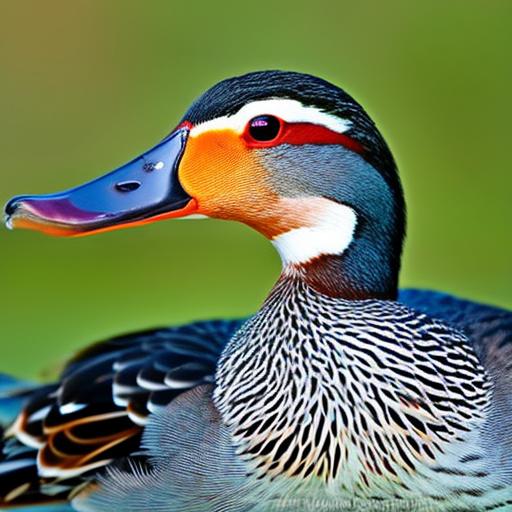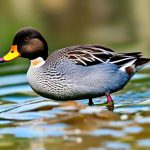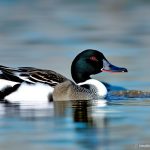Florida duck breeds are a unique and interesting group of ducks that are native to the state of Florida. These ducks have been bred and developed over many years to adapt to the specific climate and environment of the region. They are known for their vibrant colors, distinctive markings, and hardy nature. Florida duck breeds are popular among hunters and farmers due to their adaptability and versatility.
Key Takeaways
- Florida duck breeds have a rich history and unique characteristics that make them popular for hunting and farming.
- These ducks have physical traits that set them apart from other breeds, such as their distinctive bills and feather patterns.
- Care for Florida duck breeds involves providing proper nutrition, shelter, and protection from predators.
- Breeding and raising Florida duck breeds requires knowledge of their reproductive cycles and social behaviors.
- Conservation efforts are important for preserving the genetic diversity of Florida duck breeds and their role in the ecosystem.
The History and Origins of Florida Duck Breeds
The history of Florida duck breeds can be traced back to the early settlers who arrived in the state in the 16th century. These settlers brought with them various breeds of ducks from Europe, which were then crossbred with local wild ducks. Over time, these hybrid ducks developed unique characteristics that allowed them to thrive in the Florida climate.
Florida played a significant role in the development of these breeds due to its diverse ecosystems and abundant water sources. The marshes, swamps, and lakes of Florida provided an ideal habitat for ducks, allowing them to flourish and adapt to their surroundings. As a result, Florida duck breeds became well-suited for hunting and farming purposes.
Physical Characteristics of Florida Duck Breeds
Florida duck breeds are known for their striking physical features. They typically have vibrant plumage with a wide range of colors, including shades of brown, black, white, and green. Their feathers are often iridescent, giving them a beautiful shimmering effect in the sunlight.
In terms of size, Florida duck breeds vary depending on the specific breed. Some are small and compact, while others are larger and more robust. They have webbed feet that are designed for swimming and navigating through water. Their bills are also adapted for foraging and feeding on aquatic plants and insects.
Popular Florida Duck Breeds for Hunting and Farming
There are several popular Florida duck breeds that are commonly used for hunting and farming purposes. One of the most well-known breeds is the Florida Mallard, which is a crossbreed between the wild Mallard and domestic ducks. These ducks are prized for their meat and are often hunted for sport.
Another popular breed is the Florida Muscovy, which is native to the region. Muscovy ducks are known for their large size and lean meat. They are also excellent foragers and can adapt to a variety of environments, making them ideal for farming.
Unique Behaviors and Traits of Florida Duck Breeds
Florida duck breeds exhibit unique behaviors and traits that set them apart from other duck breeds. One notable trait is their ability to adapt to different environments and climates. They are highly adaptable and can thrive in both wetland habitats and urban areas.
Florida duck breeds are also known for their intelligence and social nature. They form strong bonds with their flock mates and communicate through various vocalizations and body language. They are also excellent swimmers and divers, using their webbed feet to propel themselves through the water.
How to Care for Florida Duck Breeds

Proper care is essential for the health and well-being of Florida duck breeds. They require a balanced diet that includes a mix of commercial duck feed, fresh vegetables, and insects. Access to clean water is also crucial, as ducks need to be able to swim and bathe regularly.
Florida duck breeds should be provided with a suitable shelter that protects them from extreme weather conditions and predators. The shelter should have adequate ventilation and bedding material to keep the ducks comfortable.
Breeding and Raising Florida Duck Breeds
Breeding and raising Florida duck breeds requires careful planning and attention to detail. It is important to select healthy breeding stock that exhibit desirable traits such as good conformation, strong immune systems, and good egg production.
The breeding process involves introducing a male duck to a female duck in a controlled environment. The female will lay eggs, which will then be incubated until they hatch. The ducklings will need to be raised in a safe and secure environment until they are old enough to be introduced to the rest of the flock.
Health Concerns for Florida Duck Breeds
Like any other animal, Florida duck breeds are susceptible to certain health concerns. Common issues include respiratory infections, parasites, and nutritional deficiencies. It is important to provide regular veterinary care and vaccinations to prevent these health problems.
To prevent respiratory infections, ducks should be kept in a clean and well-ventilated environment. Regular cleaning of their living quarters and providing fresh bedding can help reduce the risk of infection. Parasite control is also important, and ducks should be regularly checked for external parasites such as mites and lice.
The Role of Florida Duck Breeds in Conservation Efforts
Florida duck breeds play a crucial role in conservation efforts to protect and preserve native wildlife. These breeds are often used in breeding programs to reintroduce endangered or threatened species back into the wild. By maintaining healthy populations of Florida duck breeds, conservationists can help ensure the survival of these species for future generations.
Where to Find and Purchase Florida Duck Breeds
If you are interested in owning Florida duck breeds, it is important to find a reputable breeder or seller. Look for breeders who have experience with these specific breeds and can provide you with healthy ducks that have been properly cared for.
You can also check with local agricultural organizations or poultry associations for recommendations on where to find Florida duck breeds. Online marketplaces and classified ads may also have listings for ducks available for sale.
In conclusion, Florida duck breeds are unique and interesting ducks that have been bred and developed over many years to adapt to the specific climate and environment of the region. They have striking physical features, exhibit unique behaviors and traits, and are popular among hunters and farmers. Proper care, breeding, and health management are essential for the well-being of these ducks, and they play a crucial role in conservation efforts to protect and preserve native wildlife.
If you’re interested in learning more about Florida duck breeds, you might also find this article on chicken coop run plans from Poultry Wizard helpful. It provides valuable insights into creating a safe and functional space for your ducks to roam and exercise. Check it out here. Additionally, if you’re looking for information on the ideal size for a chicken coop door, Poultry Wizard has another informative article that you can find here. Lastly, if you’re located in Grand Island, NE, and are interested in finding a chicken coop supplier in your area, Poultry Wizard has an article specifically dedicated to chicken coop options in Grand Island that you can read here.
FAQs
What are the different duck breeds found in Florida?
There are several duck breeds found in Florida, including the Muscovy duck, the Mallard duck, the Pekin duck, the Rouen duck, and the Khaki Campbell duck.
What is the most common duck breed found in Florida?
The Muscovy duck is the most common duck breed found in Florida. They are known for their large size and distinctive red facial skin.
Are all duck breeds in Florida native to the state?
No, not all duck breeds found in Florida are native to the state. Some, like the Pekin duck, were brought over from China for commercial purposes.
What is the purpose of raising ducks in Florida?
Ducks are raised in Florida for a variety of purposes, including meat production, egg production, and as pets or for ornamental purposes.
What is the average lifespan of a duck?
The average lifespan of a duck is around 5-10 years, although some breeds can live longer.
What is the difference between a male and female duck?
Male ducks, also known as drakes, are typically larger and have more colorful plumage than female ducks, also known as hens. Drakes also have a distinctive curled feather on their tail.
What is the best way to care for ducks in Florida?
Ducks in Florida should be provided with access to clean water for swimming and drinking, as well as a balanced diet of commercial feed and fresh greens. They should also be protected from predators and extreme weather conditions.
Meet Walter, the feathered-friend fanatic of Florida! Nestled in the sunshine state, Walter struts through life with his feathered companions, clucking his way to happiness. With a coop that’s fancier than a five-star hotel, he’s the Don Juan of the chicken world. When he’s not teaching his hens to do the cha-cha, you’ll find him in a heated debate with his prized rooster, Sir Clucks-a-Lot. Walter’s poultry passion is no yolk; he’s the sunny-side-up guy you never knew you needed in your flock of friends!







